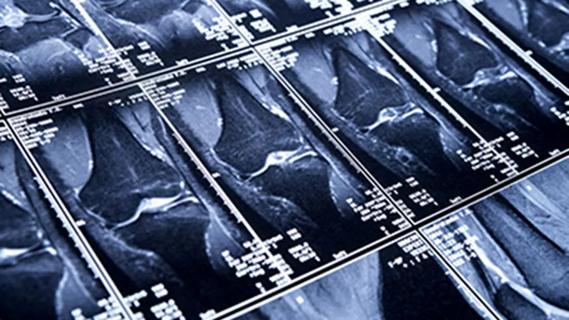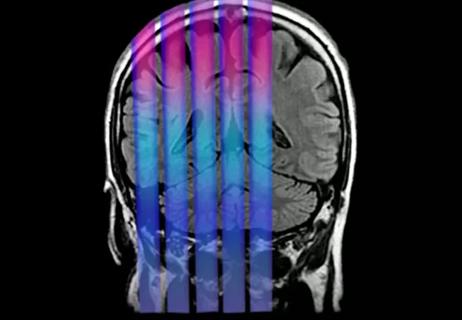Cleveland Clinic radiation oncologists aim to bring the noninvasive approach back to the U.S., where use has declined

Cleveland Clinic radiation oncologists have started a low-dose radiation treatment program for patients with osteoarthritis, an approach that had been largely abandoned in the United States while remaining widely used in Germany and elsewhere.
Advertisement
Cleveland Clinic is a non-profit academic medical center. Advertising on our site helps support our mission. We do not endorse non-Cleveland Clinic products or services. Policy
“The concept of low-dose radiation for arthritis has been around for decades but not used commonly in the U.S.,” says Chirag Shah, MD, Director of Breast Radiation Oncology at Cleveland Clinic’s Taussig Cancer Institute “We decided to create a program in radiation oncology with a dedicated care path and process so patients can get this treatment and potentially avoid invasive procedures and side effects.”
Treatment of arthritis with low-dose radiation therapy (LDRT), believed to have anti-inflammatory properties, actually dates back more than 100 years to shortly after the discovery of x-rays. Multiple published studies demonstrated significant pain relief in large numbers of patients, although there was also a great deal of heterogeneity across trials and not all produced positive results.
In the U.S., LDRT was a relatively common approach to treat osteoarthritis until the 1980s, when improved pharmacologic options became available and when some controlled trials showed no benefit of LDRT versus placebo.
In a 1998 worldwide survey of radiation use for benign disease in more than 1,300 institutions worldwide, less than 10% of U.S. providers reported using radiation to treat osteoarthritis, compared with more than 85% in Central European countries.
Now, however, “there’s been a resurgence in the thinking about the role of radiation therapy in the management of osteoarthritis, particularly in the early stages of disease,” Dr. Shah says.
In contrast to the wide variability in doses and radiation regimens across trials, “we’re doing it prospectively on a large scale throughout our enterprise at Cleveland Clinic. So, rather than having a haphazard array of approaches, we’ve created a standardized care path, and a database to follow these patients after radiation for outcomes including side effects, pain control and use of pain medication,” says Dr. Shah.
Advertisement
For a starting point in developing the care path, Dr. Shah and his colleagues used the 2018 German Society of Radiation Therapy and Oncology (DEGRO) guidelines for benign disease. These advise consideration of radiation therapy after exhaustion of other medical interventions, but before more invasive treatment such as joint replacement.
However, while DEGRO advises use of radiation therapy to treat osteoarthritis in patients older than 40 years in order to minimize the risk of secondary malignancy, the Cleveland Clinic team decided to be even more conservative and start with those aged 65 and older.
The Cleveland Clinic’s care path language is also a bit more specific than the German document’s, recommending radiation therapy for treatment of osteoarthritis of the knees, hips, hands, shoulders, ankles and/or elbows that has persisted longer than three months. No more than three sites should be treated at one time. Radiation can be considered prior to surgical and intra-articular therapies and after trials of systemic treatments.
Exclusion criteria include rheumatoid arthritis, vascular disease, joint replacement, previous trauma to joints and/or the presence of lymphedema.
Dr. Shah’s team is also dosing quite carefully. “We use 3 units of radiation, which is a very low dose. As a comparison, we use 40 to 50 units for breast cancer, and 70 to 80 units for prostate cancer. We don’t know the exact mechanism of action, but it’s felt that these low doses have anti-inflammatory properties that may explain the effect, while at the same time data suggest the risk of a secondary cancer with those doses is very low.”
Advertisement
Since the Cleveland Clinic program began in early 2023, Dr. Shah and his team have treated about a dozen patients. But they’re not rushing. “We wanted to really be thoughtful, so we’re ramping it up slowly.”
The fact that LDRT is noninvasive is a major clinical advantage, Dr. Shah says. “It’s six treatments, so it’s very easy for compliance in comparison to long-term medications. And the efficacy rates seem to be around 50% to 70%. On the other hand, it’s important to keep in mind that some of the studies have been negative. That’s part of the reason we wanted to study this in a prospective registry to make sure that we were doing things the right way.”
Advertisement
Advertisement

A tailored approach combining injections, therapy and preventive care is improving outcomes for patients with elbow OA

Center will coordinate, interpret and archive imaging data for all multicenter trials conducted by the foundation’s Osteoarthritis Clinical Trial Network

An update on the technology from the busiest Gamma Knife center in the Americas

Radiation oncology department finds weekly plan of care meetings have multiple benefits

Daily five-fraction partial breast irradiation (PBI) shows similar acute and late toxicity as every other day PBI

Research highlights promising outcomes for treating recurrent and metastatic cases

Improvements enable targeting of brain tumors with single-session, fractionated or neoadjuvant approaches

Study offers a foundation for additional research to examine radiation and immune response